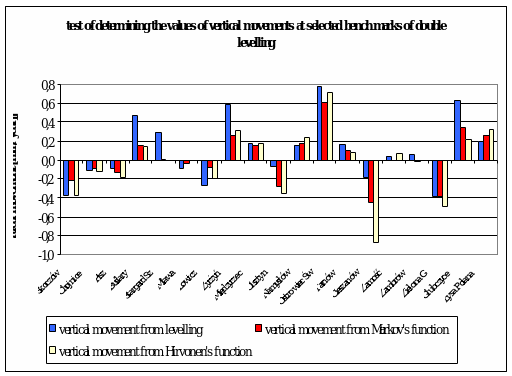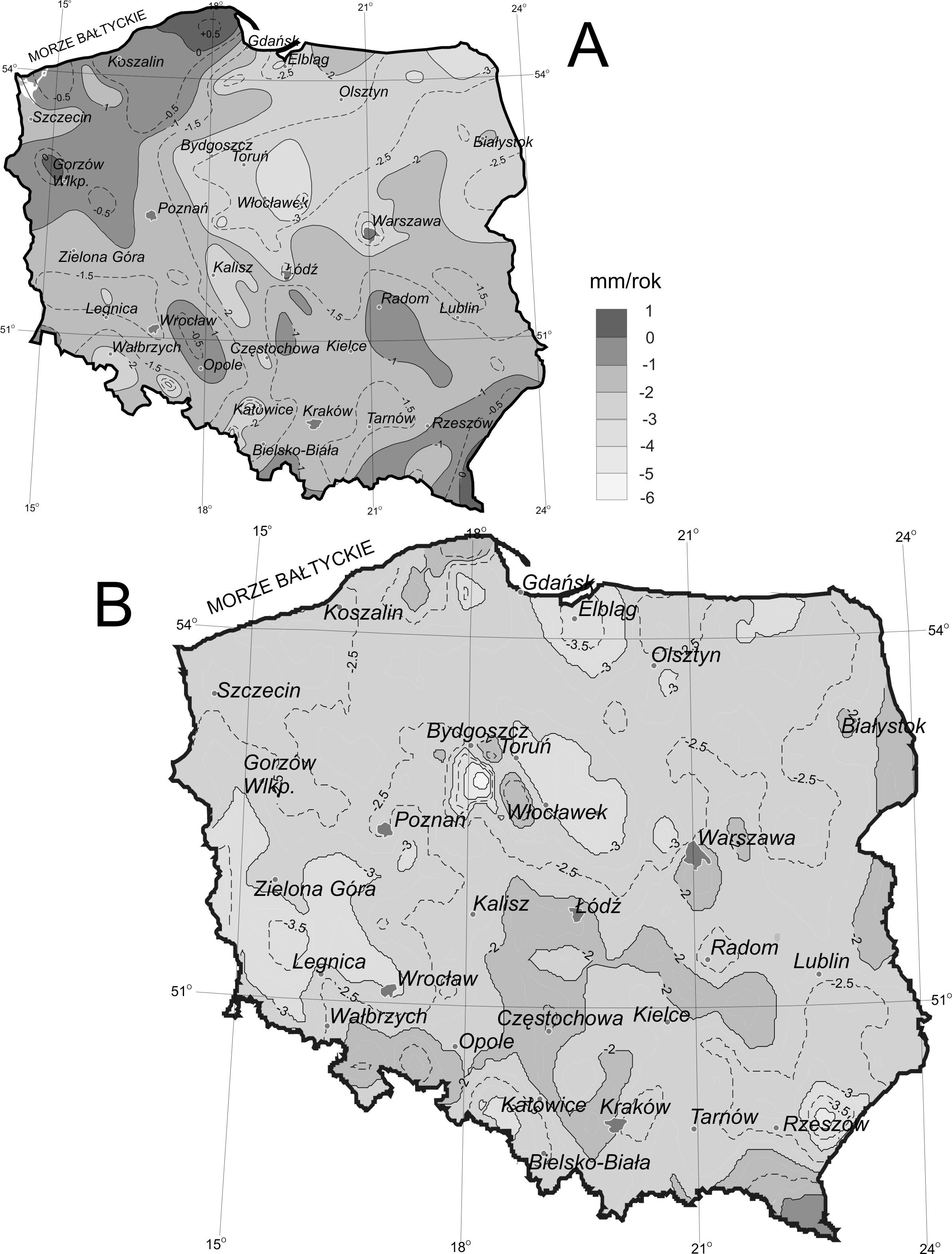MODELLING THE VERTICAL MOVEMENTS OF THE EARTHS CRUST WITH
11 KARIN KNOTTENBAUER – MODELLING INNOVATION AND STRUCTURAL CHANGE19TH EUROPEAN CONFERENCE ON MODELLING AND SIMULATION ‘SIMULATION IN
2006BASED PUPIL PROJECTIONS METHODOLOGY 1 THE MODELLING PROCESS USES
28 POSITIVE AND NEGATIVE PEER MODELLING EFFECTS ON YOUNG
34 PROTEOMIC REMODELLING OF PROTEASOME IN RIGHT HEART FAILURE
5 MODELLING INTONATIONAL VARIATION IN ENGLISHTHE IVIE SYSTEM MODELLING
Modelling the vertical movements of the earth's crust with the help of the collocation method
MODELLING THE VERTICAL MOVEMENTS OF THE EARTH'S CRUST WITH THE HELP OF THE COLLOCATION METHOD
Kamil Kowalczyk
University of Warmia and Mazury in Olsztyn
ABSTRACT
In 2003, the fourth levelling campaign was completed in Poland. This campaign, together with the previous one carried out in 1974-1982, gave a very good opportunity to determine the land uplift in the area of Poland. The paper describes shortly the third and fourth campaigns, the computation of the relative land uplift, computation of land uplift referred to the mean sea level and modelling the land uplift by the least square collocation method. The obtained results were compared with the computation done by the Institute of Geodesy and Cartography in 1986.
1.1 Introduction
Work is in progress at present in Europe on the realization of the second stage of unifying the levelling networks in Europe, i.e. the kinematic adjustment of the UELN-95 network (resolution 5 of the EUREF symposium, Prague 1999). To perform such an adjustment, a model is necessary for vertical crustal movements for the area of Europe.
Such a model for the area of Poland has been created (Kowalczyk, 2006) with the use of levelling data (the precise levelling campaign 1974-1982; 1999-2003) and mareographic data. The collocation method was used to create this model. This method is commonly used for interpolation of the intervals between the geoid and ellipsoid. Markov’s and Hirvonen’s covariance functions were utilized as analytical covariance functions.
During work on determining vertical movements at nodal bench marks, 235 common nodal bench marks were identified in both campaigns and 360 common levelling lines out of the total number of 382.
Relative vertical movements at the nodal bench marks were determined in relation to the nodal bench mark in Władysławowo. The “observed” vertical movements at these bench marks were determined in relation to the mareograph in Władysławowo, assuming the mareograph’s vertical movement as the mean vertical movement from four mareographic stations, i.e. Świnoujście, Kołobrzeg, Ustka, Władysławowo. The figure below presents the observed vertical movements in the area of Poland.

Fig. 1. The observed vertical movements in the area of Poland
Unfortunately, on account of the bench marks’ distribution (they do not cover evenly and densely enough the whole area of the country), the obtained model had to be condensed, using for this purpose interpolation and extrapolation of vertical movements.
There are many methods of interpolation using functions defined by means of a diagram, a table, or an analytical expression (Waliszewski, 1990), however, the irregular character of vertical movements makes their determination impossible by means of an exact analytical formula. This is why a mathematical model should be used for the interpolation of vertical movements.
In the case of such type of data (irregular), the stochastic model is the best (Jasecki 1983). From the literature (Moritz, 1973; Hardy, 1984; Leonhard, Niemeier, 1986; Jasecki, 1983) it appears that the most proper interpolation method for creating a numerical model of vertical movements is the collocation method.
1.2 Bases of interpolation by the least square collocation method
The collocation method proposed by Krrarup in the 1950s, spread by
Moritz, has found broad use primarily in physical geodesy, but it can
be successfully used in other fields of geodesy, among others, for
the interpolation of vertical crustal movements. The theoretical
bases of this method presented in this paper were developed on the
basis of information provided in the literature (Heiskanen,
Moritz, 1967; Moritz, 1980). This
method can be presented in outline in the following way. The
covariance of observations is called the mean value of
the product of two observations at points separated by a constant
distance
![]() .
.
If we have at our disposal
![]() observations
observations
![]() of the network bench marks’ vertical movements, then we
calculate the interpolated vertical movement in the point
of the network bench marks’ vertical movements, then we
calculate the interpolated vertical movement in the point
![]() from the formula:
from the formula:
![]() (1)
(1)
where:
![]() – vector of the nodal bench marks’ vertical movements,
– vector of the nodal bench marks’ vertical movements,
![]() – vector of the covariance between
– vector of the covariance between
![]() and
and
![]() ,
,
 – matrix of the covariance between observations
– matrix of the covariance between observations
![]() .
.
The accuracy of interpolation measured by the mean error amounts to:
 (2)
(2)
The problem of interpolation, mentioned above, can be solved only in the case when we know covariance functions. Then all elements of the matrix C and the vector CP can be calculated. To pass on to the covariance function, one should first define the covariance itself.
Let’s assume that we are dealing with a set of quantities (observations) distributed in a certain area, whose sum equals zero. If these quantities can be considered a function of the position, then the integral over the given area should equal zero (Heiskanen, Moritz, 1967). Such a set is the set of values of vertical movements in the area of the whole Earth.
The covariance of vertical movements can be defined as the mean
value of the product of vertical movements
![]() ,
,![]() in the whole examined area at points
in the whole examined area at points
![]() and
and
![]() ,
separated by the segment
,
separated by the segment
![]() .
.
In the case of small values of d, e.g. 1 km,
![]() almost equals
almost equals
![]() ,
that is to say covariance almost equals variance. In other words,
there is a strong correlation between
,
that is to say covariance almost equals variance. In other words,
there is a strong correlation between
![]() and
and
![]() .
The covariance
.
The covariance
![]() decreases
together with an increase in d, because vertical
movements become more and more independent. In the case of very great
distances d, the covariance will be very small,
but never equal to zero, for vertical movements are caused not only
by local changes in Earth’s crust, but also by regional
factors.
decreases
together with an increase in d, because vertical
movements become more and more independent. In the case of very great
distances d, the covariance will be very small,
but never equal to zero, for vertical movements are caused not only
by local changes in Earth’s crust, but also by regional
factors.
For the needs of interpolation the terrestrial globe can be
defined locally as a plane. Let’s assume that (x,
y) define coordinates on a plane and that the
points P(![]() ,
,![]() )
and Q(
)
and Q(![]() ,
,![]() )
lie on this plane. Then, homogeneity and isotropy show that the
covariance function can depend only on the distance
)
lie on this plane. Then, homogeneity and isotropy show that the
covariance function can depend only on the distance
![]() between the points PQ:
between the points PQ:
![]() (3)
(3)
It is then possible to express the covariance function by the analytical expression (Heiskanen, Moritz, 1967)
![]() (4)
(4)
where:
![]() ,
,
![]() ,
,
![]() and
and
![]() coefficients determined by Hirvonen.
They amount to: Co
= 337 mGal2,
B-1
= 40 km, m
= 1 (Heiskanen,
Moritz,
1967).
coefficients determined by Hirvonen.
They amount to: Co
= 337 mGal2,
B-1
= 40 km, m
= 1 (Heiskanen,
Moritz,
1967).
Other proposals of analytical covariance functions can be found, among others, in Moritz’s paper (1978). In the quoted paper, the author provides the following analytical expressions as:
![]() (5)
(5)
and other possible analytical expressions derived from Markov’s model:
![]() (6)
(6)
The following expressions are called Markov’s models of higher orders:
![]() (7)
(7)
![]() (8)
(8)
More information on these models can be found in papers by Jordan (1972), Kasper (1971) and Shaw et al., (1969).
The coefficients A, B, D from the formulas (4 – 8) can be determined from the empirical values of the covariance function. Basing oneself on the formula for calculating the empirical covariance function for mean gravimetric anomalies (Tscherning, Rapp, 1974), one can write a practical formula for also calculating the empirical covariance function for vertical movements, i.e.:
![]() i,
j
=1, 2, 3….n (9)
i,
j
=1, 2, 3….n (9)
where: n – the number of points at which vertical movements were determined, d – the distance between these points.
In the present paper, the program empcov from the GRAVSOFT package was used for calculations (Tscherning et al., 1992)
1.3 Determination of the empirical covariance function of the “observed” vertical crustal movements in the area of Poland
To determine the empirical covariance function on a representative
group of points nodal bench marks of a network of vertical movements
were assumed. The variance was given in
![]() ,
the correlation distance in degrees of the arc.
,
the correlation distance in degrees of the arc.
The calculations yielded the following values of parameters of the
empirical covariance function determined on the basis of the nodal
bench marks: variance
![]() - 0.2928, 1/2
- 0.2928, 1/2
![]() -
0.1464, correlation distance - 0.3652.
-
0.1464, correlation distance - 0.3652.
The figure (Fig. 2) below presents the diagram of the empirical covariance function and diagrams of Markov’s and Hirvonen’s analytical function.
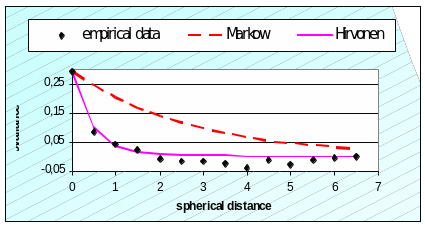
Fig. 2. Diagram of the empirical covariance function calculated on the basis of nodal bench marks
As shown Hirvonen’s analytical function is better matched to the empirical function.
1.4 Model of vertical crustal movements in the area of Poland
The realisation of the interpolation required the preparation of appropriate data, on which the calculations were performed. The intersections of meridians and parallels in the area of Poland were assumed as interpolated points in intervals of 20’x20’.
To avoid the formation of a singular matrix, using Matlab’s authoring scripts, it was attempted to define the optimum area on whose basis the vertical movement would be determined on such defined grid. On their basis and after several tests the optimum area was defined by a 50 km long radius.
The observed vertical movements at the nodal bench marks were assumed as points of departure for interpolation with values determined in relation to the nodal benchmark in Władysławowo connected with the mareographic station in Władysławowo. The interpolation was performed with the use of own scripts written in the Matlab program. These programs, named “markow” and “hirvonen”, serve for interpolation by the method of collocation with the use of appropriate covariance functions and calculating the interpolation’s mean error.
Before starting calculations, tests of the programs were carried out on about 10% of the nodal bench marks. They consisted in calculating, by means of both models (Markov’s and Hirvonen’s), the relative vertical movements at selected nodal bench marks and comparing them with the relative vertical movements obtained from the adjustment of the network by the parametric method.
The graphical expression of the obtained results is presented in Fig. .3
Fig. 3 Comparison of vertical movements
1.5 Model of the “observed” vertical crustal movements in the area
of Poland
On the basis of the procedure and formulas presented above, the following models of vertical crustal movements in the area of Poland were created.
Model of vertical movements with the use of Markov’s analytical function and Hirvonen’s analytical function (Fig. 4).
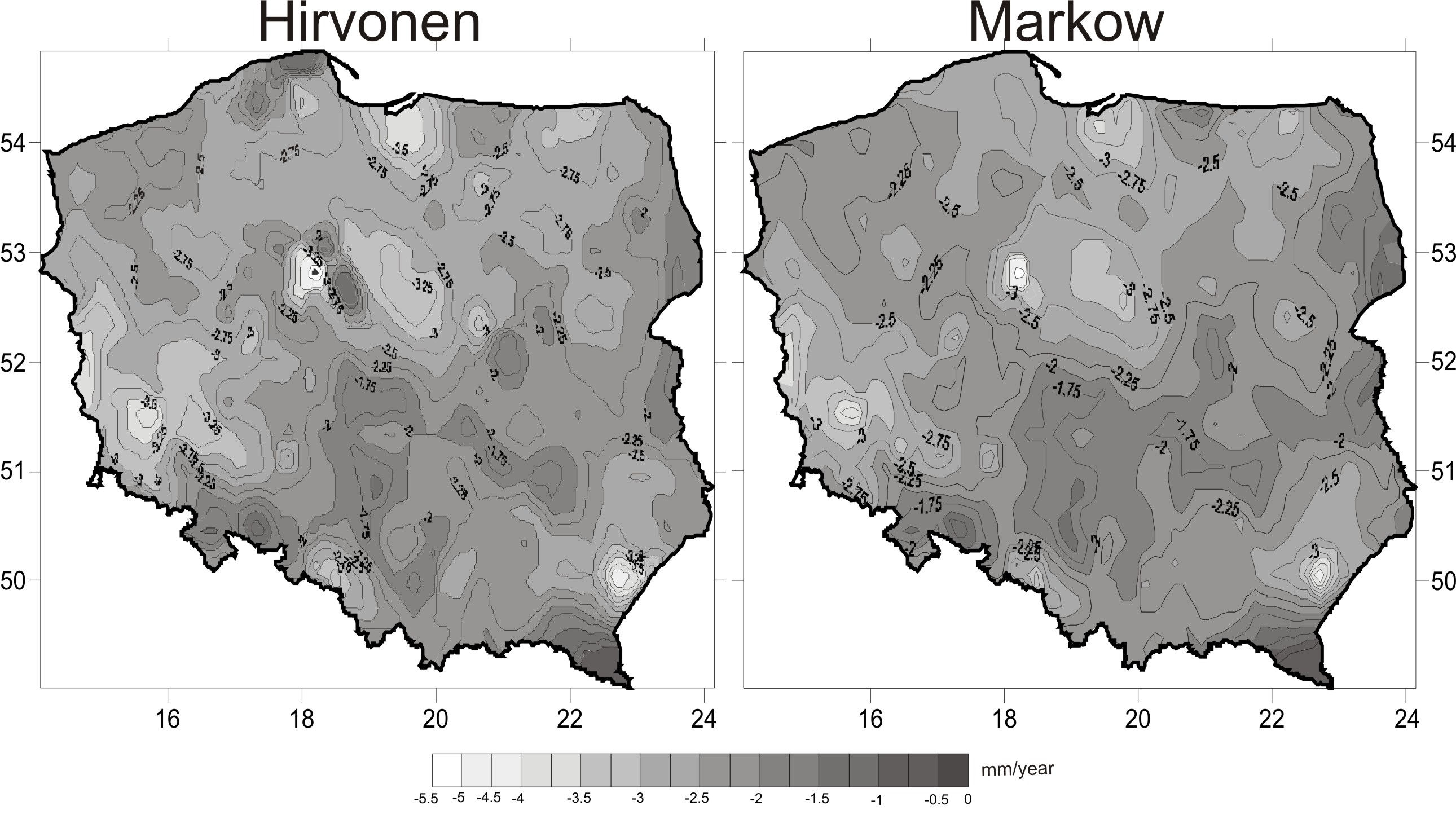
Fig. 4. Model of the observed vertical movements determined with the use of Markov’s and Hirvonen’s analytical function
The mean error of interpolation of vertical movements by the collocation method was also determined with the use of Markov’s analytical function. It is contained within the range from 0 to 0.30 mm/year (Fig. 5).


Fig. 5. The mean error of interpolation by the collocation method with the use of Markov’s analytical function
The mean error of interpolation of vertical movements by the collocation method was determined, similarly as above, with the use of Hirvonen’s analytical function. It is contained in the bounds from 0 to 0.25 mm/year (Fig. 6).
In comparing models obtained by means of Markov’s and Hirvonen’s functions, it can be seen that mean vertical movements do not differ greatly. The differentiation is greatest near Inowrocław and near Gdańsk. In the remaining area of the country, the values of vertical movements are close to one another, and the course of isolines is similar. The mean error of interpolation by the collocation method is, in both cases, within the range from 0 to 0.30 mm/year. A smaller mean error occurs in the greater part of Poland in the case of using Hirvonen’s function – from 0 to 0.15 mm/year. In the model in which Markov’s function was used, a mean error with the value from 0.1 to 0.2 mm/year dominates.
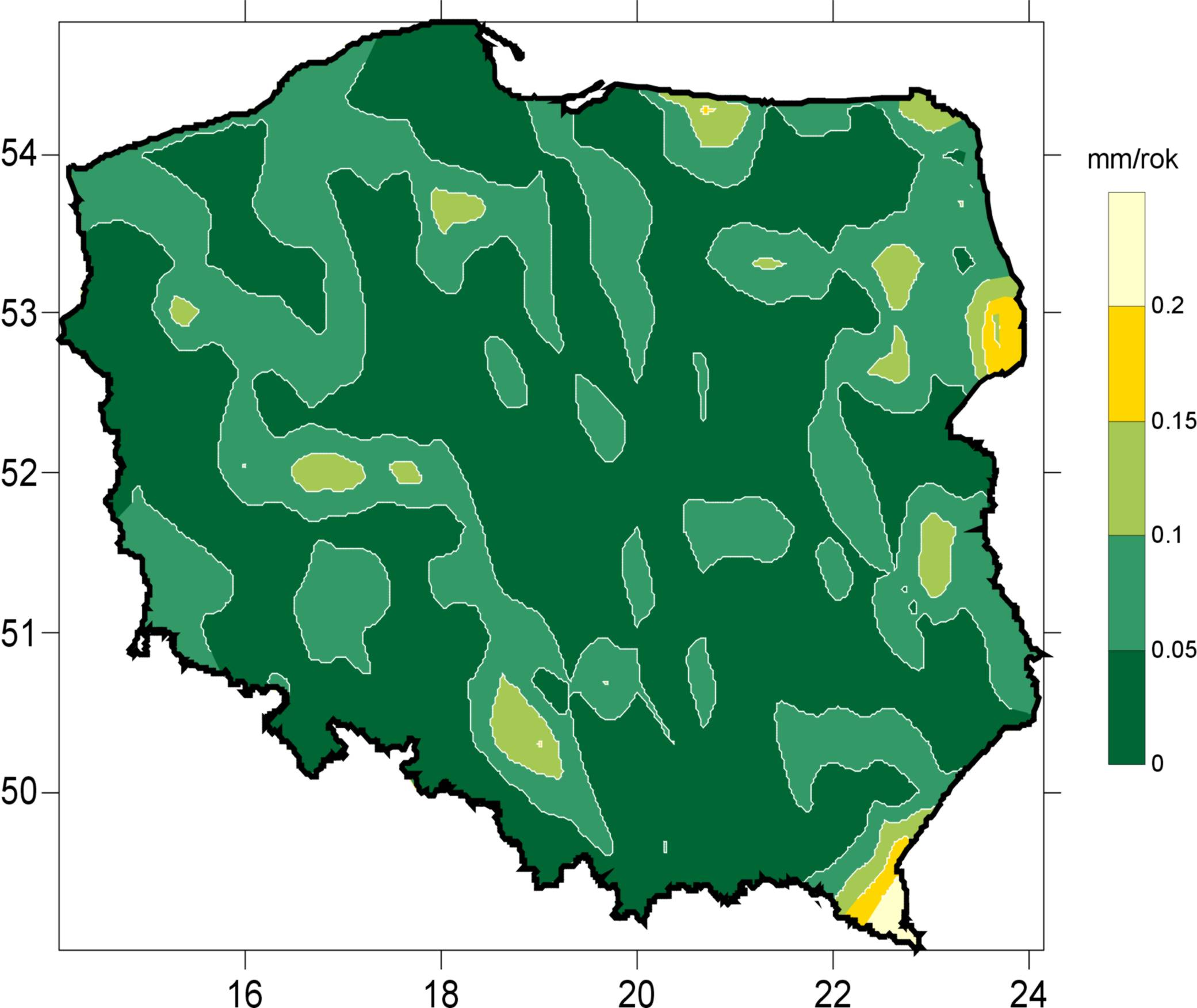

Fig. 6. The mean error of interpolation by the collocation method with the use of Hirvonen’s analytical function
1.6 Summary and conclusions
The collocation method is suitable for interpolation of vertical movements.
Better results were obtained with the use of Hirvonen’s analytical function.
A model was created of contemporary vertical crustal movements in the area of Poland with the use of interpolation by the collocation method.
Fig. 7. Vertical crustal movements in the area of Poland
The model was created in two variants: as a numerical set of interpolated vertical movements at points of the grid of meridians and parallels and an analogue map of vertical crustal movements in the area of Poland.
On the basis of the numerical model, the possibility exists of interpolating vertical movements anywhere in Poland. The first tests carried out by Prof. Adam Łyszkowicz confirmed the model’s accuracy, which, in consequence, also confirmed the possibility of using collocation for elaborating vertical crustal movements.
1.7 Literature
Hardy R.L. 1984, Kriging, collocation and biharmonic models for applications in earth sciences. Tech. Papers of the American Congress on Surveying and Mapping, pp.363-372.
Heiskanen W., Moritz H., 1967, Physical Geodesy, W.H. Freeman and Company, San Francisco and London.
Jasecki M., 1983, The covariance function in the process of developing geodetic data, Geodesy and Cartography, PWN, 32(4): 283-292, Warsaw.
Jordan S. K., 1972. Self-Consistent
statistical model for the gravity anomaly, vertical deflections, and
undulation of the geoid. J. Geophys. Res., 77(20): 3660![]() 3670.
3670.
Kasper
J. F., 1971. A second-order Markov
gravity anomaly model, J. G. Res., 76(32): 7844![]() 7849.
7849.
Leonhard Th., Niemeier W. (in Eds. H. Pelzer and W. Niemeier), 1986, A kinematic model to determine vertical movements and its application to the testnet Pfungstadt. Contributed paper to the Symp. on height determination and recent vertical crustal movements in Western Europe, held at the Univ. Hannover. Sept. 15-19, 1986, Dummiers Verlag-Bonn.
Moritz H., 1978, Least-squares collocation. Rev. Geoph Space Physics, 16(3).
Moritz H., 1980, Advanced physical geodesy. H. Wichmann Verl. , Karlsruhe.
Tscherning C.C., Rapp R.H., 1974, Closed Covariance Expressions for Gravity Anomalies, Geoid Undulations, and Deflections of the Vertical Implied by Anomaly Degree-Variance Models. Rep. of the Dep. of Geod. Sci. No. 208, The Ohio State University, Columbus.
Tscherning C., Forsberg R., Knudsen P., 1992, The GRAVSOFT package for geoid determination. First Continental Workshop on the Geoid in Europe Towards a Precise Pan.
Kowalczyk K., 2006, Determination of a model of vertical crustal movements in the area of Poland, Doctoral thesis, UWM Olsztyn.
The paper was realized within centres on science in summers 2005/2006 work.
7 MATHEMATICAL MODELLING WORKSHEET 14 TRAFFIC FLOWS AND PEDESTRIAN
7 MATHEMATICAL MODELLING WORKSHEET 8 MODELS OF A COMPETITIVE
7 MODELLING COPPER (II) LIQUIDLIQUID EXTRACTION THE SYSTEM ACORGA
Tags: crust with, vertical, movements, earths, crust, modelling
- “EL ESTUDIO DE LAS RELIGIONES SE CONVIERTE EN UN
- CENTRE FOR LEARNING AND STUDY SUPPORT ENHANCING ACADEMIC PRACTICE
- NZQA EXPIRING UNIT STANDARD 27263 VERSION 4 PAGE 3
- MATERIAL BIBLIOGRÁFICO DISPONÍVEL PARA PESQUISA NO SETOR DE DOCUMENTAÇÃO
- COMITÉ ÉTICO DE EXPERIMENTACIÓN ANIMAL TRÁMITES PARA SOLICITUD DE
- HOSPITALES EN DEMARCACIÓN CONSULAR DE CG CANTÓN SHENZHEN PEOPLE´S
- ZAPISNIK 1 REDNA SEJE ČLANOV UO PGD SPPOLSKAVA KI
- FOR PROTEIN DATABASE SEARCHES THE BLASTP ALGORITHM FIRST MAKES
- COMPANY QUESTIONNAIRE HMFA PROJECT DATE
- LED USER MANUAL SHEET 1:DISPLAY MENU INTERFACE DISPLAY DMX18CH
- TEXTO ÚNICO DE PROCEDIMIENTOS ADMINISTRATIVOS PROVINCIA SAN MARCOS
- THE HONORS THESIS ENVIRONMENTAL STUDIES REVISED FEBRUARY 2016 AS
- 31969L0493 DIREKTIVA VIJEĆA OD 15 PROSINCA 1969 O USKLAĐIVANJU
- 16 U Z A S A D N I
- DIGESTIVO ABSORCIÓN EL JUGO PANCREÁTICO ES UNA SECRECIÓN QUE
- SEARCH4YUMMY VERSION 10 USER MANUAL DATE 20110112 SEARCH4YUMMY USER
- ACUA PRIMER CUATRIMESTRE 2015 FEBRERO 2015 LUNES 2 INAUGURACIÓN
- CORRECTED CLAIM STANDARD COVER SHEET GENERAL INSTRUCTIONS FOR PROVIDERS
- TELEVISION EQUIPMENT AND ACCESSORIES – 840 PLEASE INDICATE WHICH
- SCHEMA REGIONAL DE COHERENCE ECOLOGIQUE DE BRETAGNE RÔLE ET
- FEDERAL COMMUNICATIONS COMMISSION FCC 07206 BEFORE THE FEDERAL COMMUNICATIONS
- İSTANBUL ÜNİVERSİTESİ MBA PROGRAMLARI HAKKINDA SIKÇA SORULAN SORULAR PROGRAMI
- OSEBNI IZOBRAŽEVALNI NAČRT ZA DIJAKA INJO S STATUSOM
- IF YOU ARE INTERESTED IN BECOMING A HIGH SCHOOL
- ANNUAL NOTICE TO PARENTSGUARDIANS 20162017 DEAR PARENTGUARDIAN CALIFORNIA EDUCATION
- PROJECT INFORMATION DOCUMENT (PID) CONCEPT STAGE REPORT NO AB3858
- DOKUMENTACJA PRZETARGOWA DO POSTĘPOWANIA W TRYBIE PRZETARGU NIEOGRANICZONEGO DWUSTOPNIOWEGO
- STRATEGIE V OBLASTI POHYBOVÉ AKTIVITY ZÁKON Č 2582000
- PAGE 4444 PARTIS POLITIQUES ET CAMPAGNES ÉLECTORALES À
- FICHA MÉDICA NOMBRE Y APELLIDO …………………………………………………………………… EDAD……… OBRA SOCIAL
UCHWAŁA NR XIV 19 PROJEKT RADY GMINY DUSZNIKI Z
 8 SALINAN BUPATI PATI PROVINSI JAWA TENGAH
8 SALINAN BUPATI PATI PROVINSI JAWA TENGAHLUZ ELENA MONTAÑO CÁCERES ID 1091293 PROYECTO FRACASADO DE
 ANEXO II DECLARACIÓN RESPONSABLE (ORDEN SAN52015) DONDOÑA1……………………………………………………………………………………… CON DNINIF…………………………
ANEXO II DECLARACIÓN RESPONSABLE (ORDEN SAN52015) DONDOÑA1……………………………………………………………………………………… CON DNINIF………………………… ŠTEVILKA 12041200810 DATUM 30 5 2008 ANKETA SLOVENSKIH PODJETIJ
ŠTEVILKA 12041200810 DATUM 30 5 2008 ANKETA SLOVENSKIH PODJETIJdr John & Alice Madigan Memorial Scholarship Fund the
JOÃO MISSEL GIGANTE SL 5º 342 CAP 5º ESTEVÃO
 ENCUESTA A CLIENTES LA ENCUESTA ES UNA TÉCNICA DE
ENCUESTA A CLIENTES LA ENCUESTA ES UNA TÉCNICA DE ULUSLARARASI NAKLİYECİLER DERNEĞİ BASIN BÜLTENİ 0242019 AVRUPA TAŞIMALARINDA KAN
ULUSLARARASI NAKLİYECİLER DERNEĞİ BASIN BÜLTENİ 0242019 AVRUPA TAŞIMALARINDA KANTO UNDERSTAND HOW HINDUS WORSHIP THE PUJA CEREMONY HINDU
 ZDRAVSTVENI DOM RADLJE OB DRAVI MARIBORSKA CESTA 37 NA
ZDRAVSTVENI DOM RADLJE OB DRAVI MARIBORSKA CESTA 37 NA E TALLER DE MEDIACION L MASTER DE MEDIACIÓN
E TALLER DE MEDIACION L MASTER DE MEDIACIÓN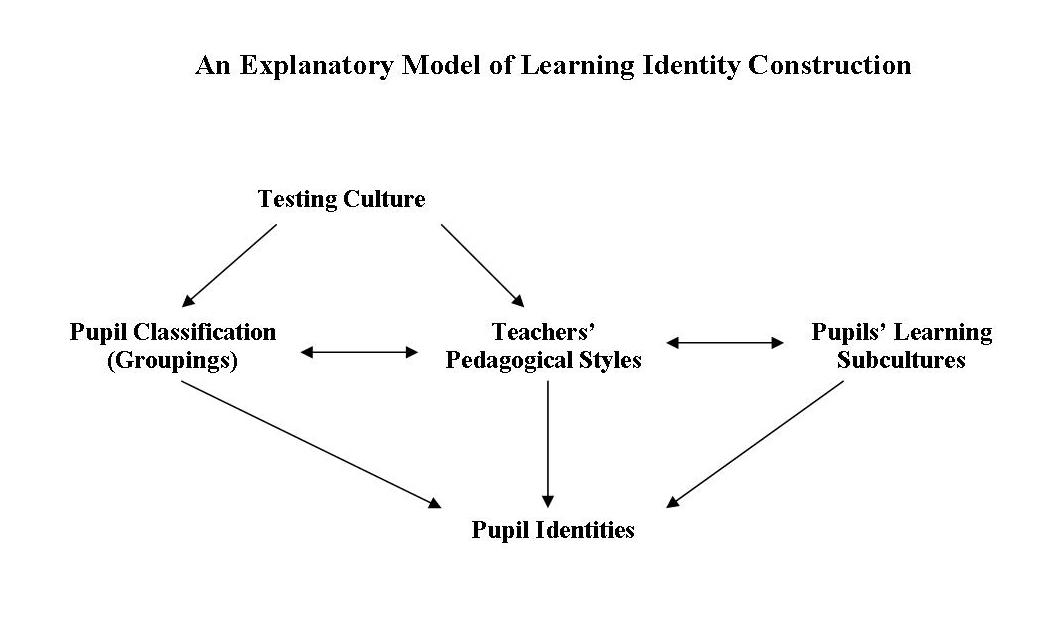 30 THE MAKING OF IDEAL PUPILS THE MAKING OF
30 THE MAKING OF IDEAL PUPILS THE MAKING OFTEXAS EDUCATION AGENCY DIVISION OF TEXTBOOK ADMINISTRATION PUBLISHERS WITH
FORM LAA 1081 DETERMINATION INCREASING PERIOD OF CURRENCY OF
 FUNZIONI ATTI COMUNICATIVI ESPRESSIONIESPONENTI PERSONALE PRESENTARSI SONO ……
FUNZIONI ATTI COMUNICATIVI ESPRESSIONIESPONENTI PERSONALE PRESENTARSI SONO …… MISIÓN Y MARCO FUNCIONAL BÁSICO DIRECCIONES ÁREAS Y UNIDADES
MISIÓN Y MARCO FUNCIONAL BÁSICO DIRECCIONES ÁREAS Y UNIDADES DECLARATION OF CRIMINAL RECORD EDUCATION PLEASE READ THE
DECLARATION OF CRIMINAL RECORD EDUCATION PLEASE READ THE PUEDE REMITIR LA AUTORIZACIÓN A BIBLIOTECADIGITALUNIAES CONSULTE EL REPOSITORIO
PUEDE REMITIR LA AUTORIZACIÓN A BIBLIOTECADIGITALUNIAES CONSULTE EL REPOSITORIOTYTO VŠEOBECNÉ PODMÍNKY JSOU NEDÍLNOU SOUČÁSTÍ CESTOVNÍ SMLOUVY NEBO
